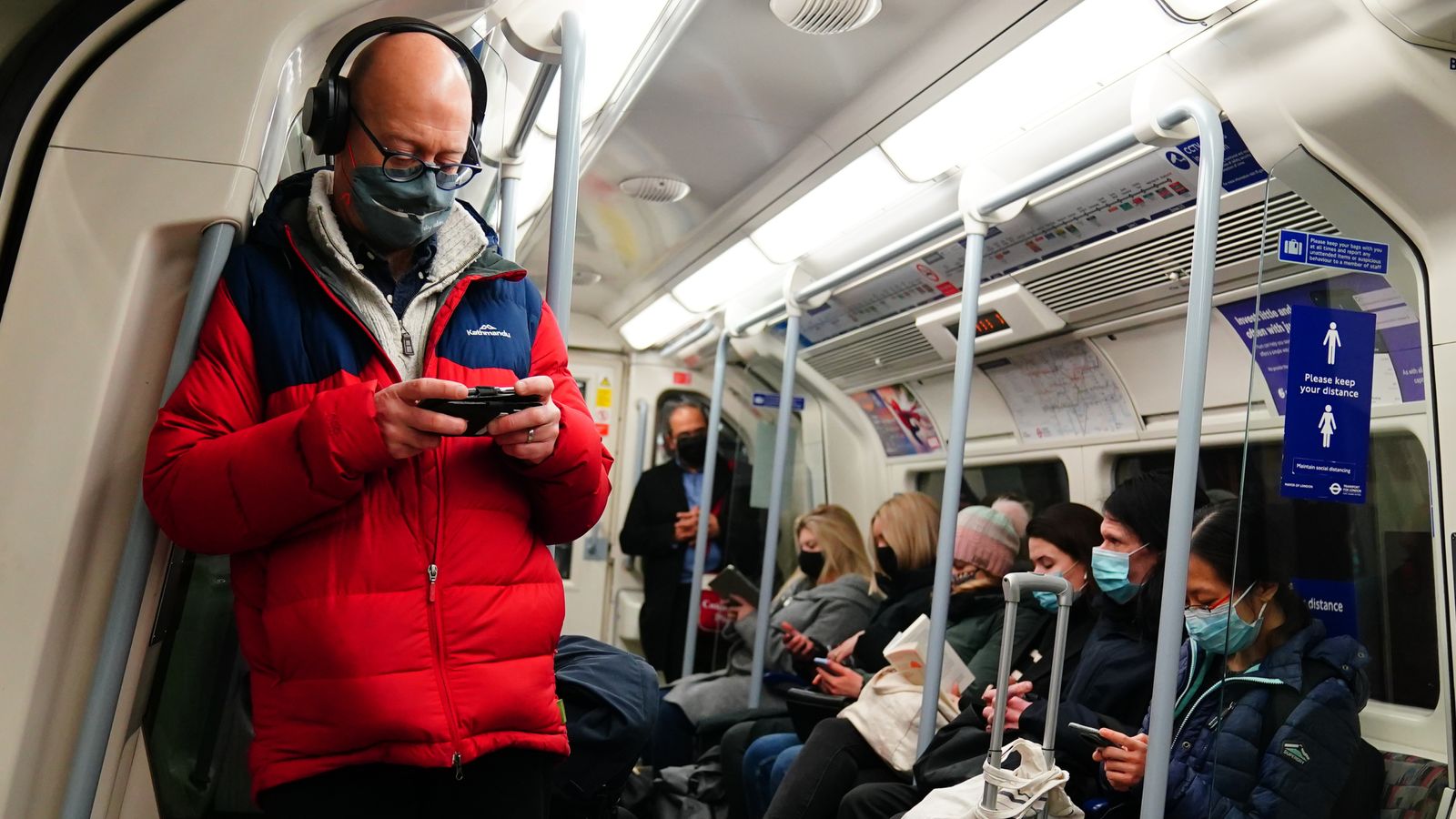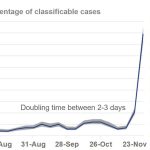There is now no doubt that the UK’s Omicron wave has peaked.
The latest data from the Office for National Statistics (ONS) shows the number of people with COVID in the week to 15 January dropped 20% on the week before.
It mirrors the decline in cases reported on the daily dashboard, though some people have doubted the drop because of the change to the rules on PCR testing.
But the ONS infection survey gives an accurate reflection of what’s going on. It’s based on random testing, whether or not people have symptoms.
Read live updates on COVID in the UK and around the world
So the fall in cases is real.
The data has given the government the confidence that Plan B can be safely lifted in England.
COVID-19: Infections falling in three of the four UK nations, says ONS
Christian Wakeford: Tory MP defects to Labour telling Boris Johnson he is ‘incapable of offering leadership’
COVID: Reinfection risk from Omicron 16 times higher than Delta, ONS data indicates
There is little doubt that the restrictions – along with the voluntary behaviour changes and social sacrifices that people made in the run-up to Christmas – had an effect.
People who work from home have half as many social contacts as those in the office. And analysis by the UK Health Security Agency shows face masks significantly reduce transmission of the virus.
Soon after Plan B was introduced the doubling time of the Omicron wave began to slow, buying time for the booster rollout.
But even though coronavirus cases are well down on their peak, they are still high.
Please use Chrome browser for a more accessible video player
The current seven-day average for the UK is above 100,000 cases a day. Compare that to the peak of last January of just 61,000 – and we thought that was bad.
And while hospital admissions are down in every nation, they’re not yet falling in every region.
In the Midlands they have only plateaued.
Working from home, COVID passports and mask-wearing to go as England Plan B rules to be lifted
So is it too early to do away with Plan B?
Minutes from the 7 January meeting of the government’s Scientific Advisory Group for Emergencies (SAGE) warned that lifting the restrictions before the peak was passed in all regions could result in more hospital admissions.
And modelling produced for SAGE by the University of Warwick suggests if precautionary behaviour declines gradually in the four months after lifting Plan B there could be a spring wave leading to between 1,000 and 2,000 daily hospitalisations.
The World Health Organisation has also urged countries not to rely on vaccinations alone to keep COVID in check.
So lifting Plan B so soon looks like another roll of the dice.
The government gambled on Omicron before.
Follow the Daily podcast on Apple Podcasts, Google Podcasts, Spotify, Spreaker
Even when infections were surging in December and hospitals were under extreme pressure, it ignored more precautionary calls from its scientific advisers to tighten restrictions further.
The government might be right.
Immunity might be good enough for the next few weeks to hold back the virus.
But it is a gamble.






















